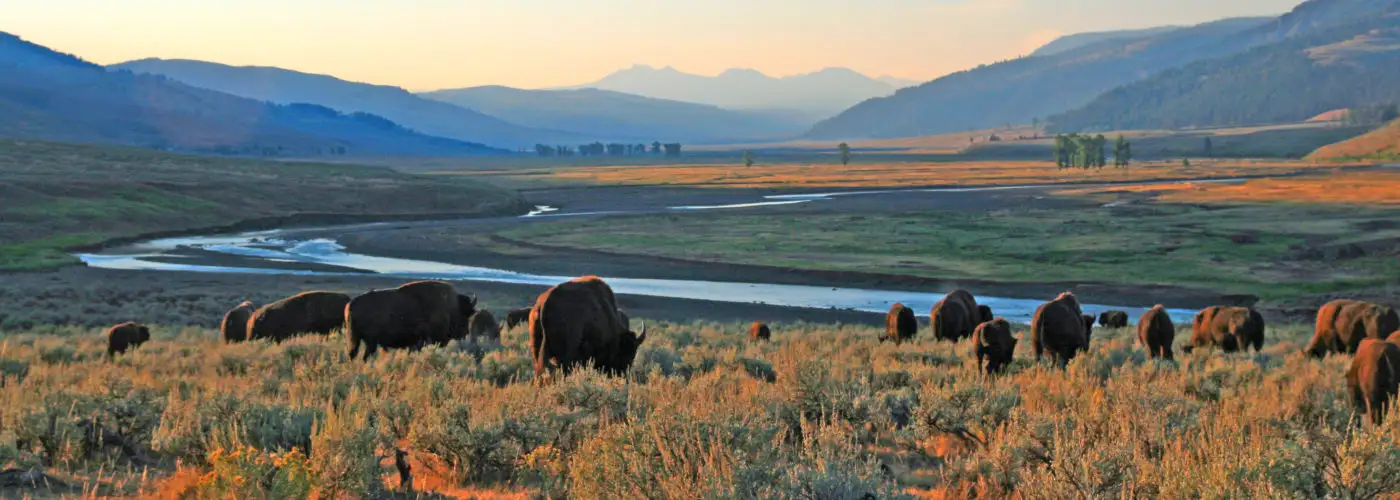National parks across the country experienced a surge of visitors last year after the relaxation of COVID-19 travel restrictions. The parks system tallied over 290,000,000 recreation visits nationwide, with six parks easily surpassing their previous visitation records. As the number of visitors to the parks increases, so does the potential environmental impact. Fortunately, travelers can do their part to keep these natural wonders thriving. Rick Hoeninghausen, Director of Sales and Marketing for Xanterra and Yellowstone National Park Lodges, has five easy tips to help visitors be more responsible travelers while exploring Yellowstone and other national parks.
Editor’s Note: Keep up to date with Yellowstone’s phased reopening after the recent flooding at Yellowstone National Park’s alert page.
Don’t Provoke the Wildlife
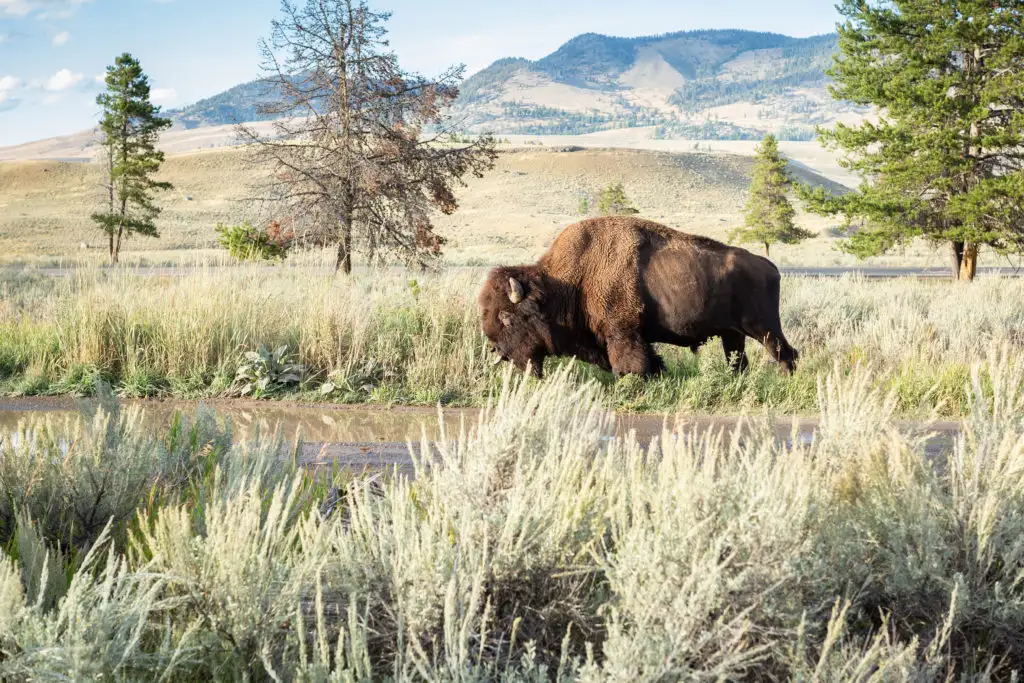
One of the privileges of visiting a conservation area is the chance to see animals that you can’t see anywhere else. While you may have aspirations of snagging a viral selfie next to a bison or getting close to bears to film the next Planet Earth on your iPhone, Hoeninghausen advises against it.
“I take my selfie, I got away with it, I move on. Somebody sees it, they try it, they may get away with it,” says Hoeninghausen, “Eventually, someone’s not going to get away with it.” He asks visitors to remember that these are not domesticated animals and, unlike a zoo, are not contained behind a fence. Provoking the wildlife or coaxing them to behave a certain way can not only disturb their natural rhythms, but put the safety of yourself and those around you at serious risk.
If you want to get the best wildlife experience in Yellowstone, Hoeninghausen recommends visiting early in the morning or in the evening, when the animals are most active and easy to see from a safe distance.
Don’t Stray from Designated Areas
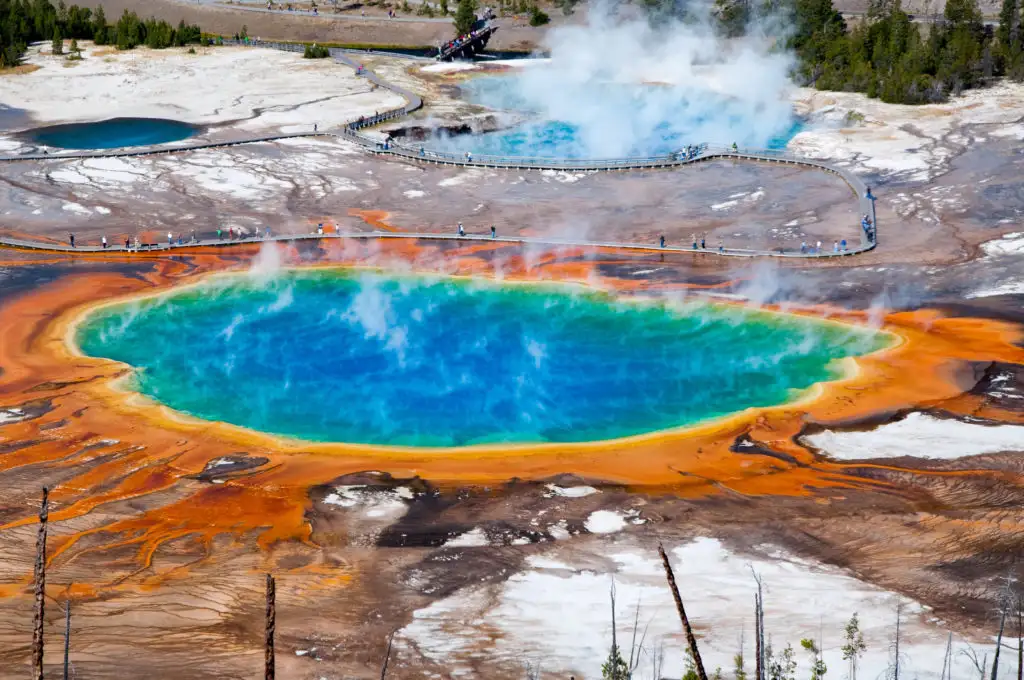
Off-roading can be tempting, but it’s a dangerous idea for more than one reason. Straying outside of designated areas such as boardwalk paths, clearly marked parking areas, roads, and trails could damage the fragile ecosystem of the park. The consequences of an incorrectly parked car on a patch of vegetation or a trail of footprints through a delicate bacteria mat will last long after you’ve left. These guidelines exist not only to protect the parks, but to protect visitors as well.
“Not only are you damaging that resource, but you’re potentially putting yourself at risk for serious injury if not worse,” says Hoeninghausen, drawing on his experience at Yellowstone’s Grand Prismatic Spring. It can be tempting to step out onto the sea of colors at this hot spring, but falling through the potentially thin crust into hot, acidic waters could be deadly. Furthermore, visitors can face criminal complaints for disregarding these critical safety measures.
Get a safer off-the-beaten-path vibe by exploring lesser-visited areas of a park during the middle of the day, when more popular attractions are at the height of visitation. Then, save your more highly-trafficked areas for the evening when most day-trippers have returned home.
Follow the “Leave No Trace” Rule
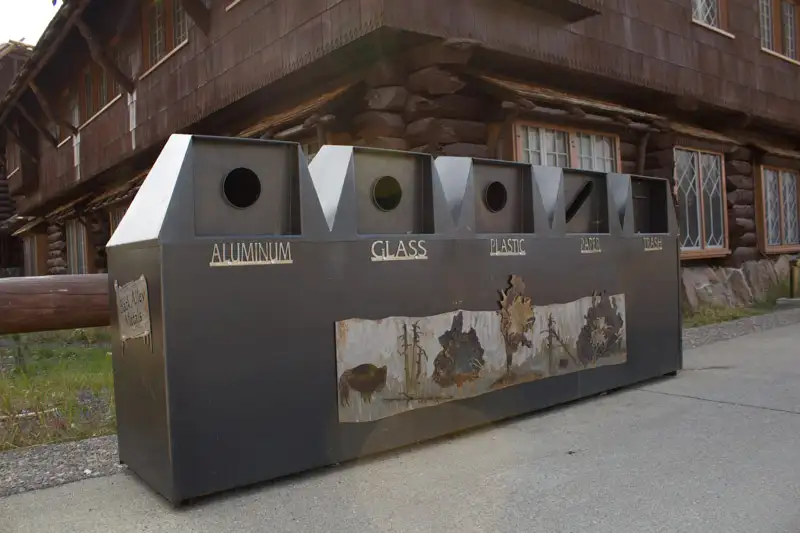
“Leave No Trace”, also referred to as “Pack It In, Pack It Out”, is an ethos followed by many outdoor enthusiasts to help preserve natural areas. The core of the concept comes down to this: bring what you take in with you—whether it be garbage, food waste, or camping gear— out with you when you leave.
This rule also extends to only packing out what you brought with you. While you’re free (and encouraged) to remove any litter you find in the parks, don’t sneak off with any souvenirs from the natural areas. Nearly 5 million people visited Yellowstone National Park in 2021. It may seem like no big deal for one person to pick a wildflower or pocket a rock, but if everyone does the same, it can have a substantial impact on the park ecosystem and future visitor experience.
There are seven principles of “Leave No Trace,” as summarized by the National Parks Service (NPS). They are:
- Plan ahead
- Travel/Camp on Durable Surfaces
- Dispose of Waste Properly
- Leave What You Find
- Minimize Campfire Impacts
- Respect Wildlife
- Be Considerate of Other Visitors
Some ways to put these principles into practice are:
- Make use of garbage, recycling, and compost facilities when available
- Bring along a bag to collect your waste products when deeper in wilderness
- Tie your food up away from your campsite and out of reach of wildlife
- Pick up litter you find in the park
- Avoid hiking and camping in vulnerable areas
- Don’t alter the landscape (building small dams, creating structures from branches, etc.)
Do Some Research
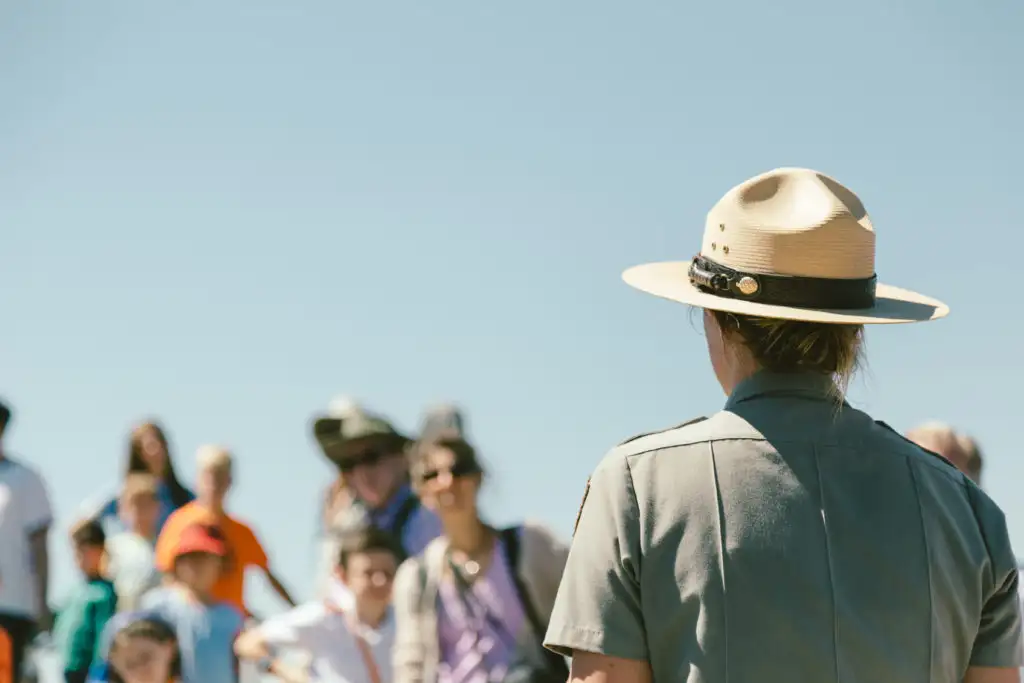
Take advantage of the wealth of resources available to educate visitors about parks before, during, and after your visit. The NPS website and individual park sites are a great starting point to prepare for your trip. In your research, remember that these natural areas had lives long before they were national parks. Look into the history of the land and the people connected to it and learn about any partnerships and projects the park may have with local tribal nations.
While at the parks, seek out resources like ranger programs, educational film screenings, and opportunities with national park education partners to fully experience what the park has to offer. Supporting nonprofit organizations like the National Parks Foundation and the National Parks Conservation Association is a great way to stay involved at home.
Practice Kindness
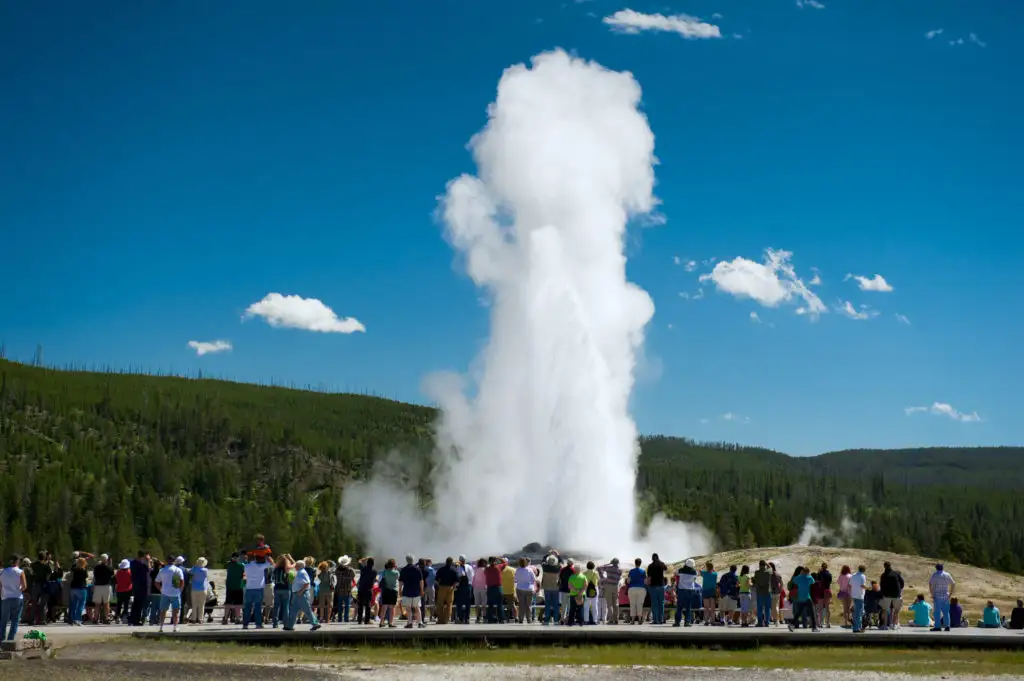
With the recent influx of visitors to national parks comes a host of issues to navigate. Lack of parking, crowded attractions, traffic, and pandemic regulations can all leave guests feeling disgruntled. Keeping a calm demeanor can avoid sparking a larger issue and reduce your own vacation stress level.
Hoeninghausen echoes Scott Frazier, director of Project Indigenous and longtime resident and visitor of Yellowstone National Park, when boiling it down to this simple idea: “Give the other guys a break.”
Approach fellow park-goers and employees from a place of understanding and patience. Your trip, and the trip of those around you, will be better for it.
Visit the National Parks Service website for more information about the Yellowstone National Park 150th Anniversary.
You Might Also Like:
• 5 Secret Tips for Finding Travel Deals• What To Do If Something Breaks On Your Plane Mid-Flight
• The 10 Least Fun Cities in America
• Apple and Airlines Team Up to Track Lost Luggage
• 11 Important Things to Do Before Your Next International Trip
We hand-pick everything we recommend and select items through testing and reviews. Some products are sent to us free of charge with no incentive to offer a favorable review. We offer our unbiased opinions and do not accept compensation to review products. All items are in stock and prices are accurate at the time of publication. If you buy something through our links, we may earn a commission.
Related
Top Fares From
Today's Top Travel Deals
Brought to you by ShermansTravel
Greece: 9-Night Vacation, Incl. Meteora &...
Exoticca
 vacation
$2099+
vacation
$2099+
New Year Sale: Luxe, 9-Nt Alaska...
Oceania Cruises
 cruise
$3599+
cruise
$3599+
Ohio: Daily Car Rentals from Cincinnati
85OFF.com
 Car Rental
$19+
Car Rental
$19+
